ScottB
gamer level 6
7242 xp
7242 xp
followers
33
33
Use my invite URL to register (this will give me kudos)
https://boardgaming.com/register/?invited_by=madwookiee
profile badges




recent achievements

Pick a Favorite LGS
Go to the Store Locator page, find your favorite local game store (LGS) and click on the Favorite button.
Go to the Store Locator page, find your favorite local game store (LGS) and click on the Favorite button.

Reporter Intern
Earn Reporter XP to level up by completing Reporter Quests!
Earn Reporter XP to level up by completing Reporter Quests!

Intermediate Reviewer
Review 8 games and receive a total of 380 positive review ratings.
Review 8 games and receive a total of 380 positive review ratings.

I'm a Gamin' Fiend!
Claim that you have played a game today by clicking the "Played Today!" button on a game page 200 times.
Claim that you have played a game today by clicking the "Played Today!" button on a game page 200 times.
Player Stats
Critic (lvl 3)
1255 xp
1255 xp
Explorer (lvl 3)
711 xp
711 xp
Professor (lvl 2)
530 xp
530 xp
Reporter (lvl 1)
103 xp
103 xp
About Me
Visit my blog at menwithdice.com!












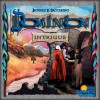







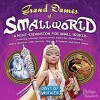







































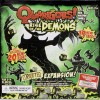







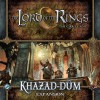




















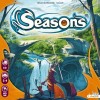

















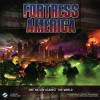
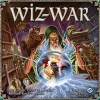










Puzzle Strike
Originally posted at menwithdice.com – used with permission.
I’ll admit that I had a bit of trouble wrapping my head around Puzzle Strike for the first few games. The first game took forever, mostly because we couldn’t figure out how to finish off the opponent. The second game was over ridiculously quickly, because one of us learned that part better than the rest of us. The next few games felt really scripted as we all started buying all of the same chips (mono-purple, as I’ve seen it called). At that point, I got frustrated and set it aside for a bit. I was starting to think that perhaps my list of trusted reviewers, most of whom loved this game, was badly mistaken.
Puzzle Strike is an odd sort of hybrid. It’s billed as a card game that’s played with chips that simulates a puzzle game simulating a street fighter-styled game. Think Dominion meets Tetris meets Street Fighter, I guess. It’s certainly one of the stranger themes for a game that I’ve ever seen. The game does sort of pull it off, although it’s tough to know how successfully, since the game it’s pretending to be doesn’t exist. The deckbuilding elements have no real thematic coherence; I’m ok with that, though, as deckbuilding as a mechanic is typically difficult to justify on a thematic basis. It does convey a sense of the back and forth, combo-laden, attack/block/counter rhythm of an old-school arcade style fighter, so I’ll give it credit for being able to evoke some sense of theme around a multi-layered simulation of two nonexistent video games.
I’m not sold on the chips. I’m an old-school card gamer. I played Magic:TG during the Legends/Revised timeframe. I have more cards for the Star Wars CCG, Legend of the Five Rings, Middle Earth: The Wizards, and Seventh Sea than I care to admit. ****, I’ve probably still got a couple of Shadowfist decks lurking around somewhere. I love the feel of a deck in my hand, I like the way that they shuffle, I like the tactile sense of moving cards around as I plan my next turn, and I like that I can store them in a box that will fit in my backpack. Chips? Not so much. They don’t shuffle as well and they take up more space. Visually, though, they really work for this game. I don’t think that piling up cards would have the same sense of impending doom that a stack of chips somehow manages to convey. Plus, parts of my Dominion set are beat to all **** after what’s probably approaching one hundred plays, and I think these chips would fare better under repeated use. Overall, I think it’s probably a smart design move, even if it does have some tradeoffs.
The game itself invites comparisons to Dominion probably more than anything else, although in practice they play very differently. The goal of Puzzle Strike isn’t accumulation of Victory Points – it’s elimination of opponents. It’s a brawl, not an economic engine. Each player has a Gem Pile that consists of gem chips that have been ante’d or added by an opponent. This pile serves several distinct purposes: it creates the game clock, as a player is eliminated when his or her gem pile is at ten or more at the end of the turn; it’s also the primary accelerant, as players draw an increasing number of chips as their gem piles grow; and it’s the primary offensive and defensive stockpile through the Crash and Counter-crash mechanic.
A turn begins with an ante, typically a 1-gem added to a player’s gem pile. Players then receive one Action and one Buy in that order, similar to Dominion, after which any leftover chips are discarded and a new hand is drawn. Action chips can attack, react, perform utility functions such as drawing chips or creating additional actions, or crashing. Crashing is the main mechanism for dealing damage to your opponent while reducing the number of gems in your own pile. Crash-sphere chips (or purple chips, hence the term mono-purple that I mentioned previously) come in several flavors. A basic Crash Gem removes one gem chip from your gem pile and sends a number of 1-gem chips at your opponent equal to that gem’s value. In other words, crashing a 3-gem sends 3 1-gem chips. Combine chips replace two gem chips from your pile with a single chip of equivalent value, allowing you to send more chips in the direction of your opponent when you crash. And Double Crash Gems – wait for it – send two gems’ worth of 1 chips. Combines also allow an extra action, so it’s not uncommon in the late game to start chaining purple like a madman. Combine-Combine-Crash is a typical turn in the later game. Crashes can also be played as a reaction – if an opponent crashed a 2-gem, you can play your own counter-crash, sending a number of gems back at that player to cancel out incoming gems and perhaps return gems to his or her gem pile. However, 4-gems can’t be countered, so a player must decide whether it’s better to crash now or wait to combine further, hoping to reach the uncounterable point.
Players start with ten chips in their bags: six 1-gems, a crash gem, and three character chips. The current game includes ten different characters, each with three unique chips. Characters specialize in different strategies; Setsuki has an edge in creating combos, Rook has a defensive flavor, and Lum is a push-your-luck character that likes a large gem pile, for example. The character chips are played as actions just like any other action chip, but because they’re unique to the character, they lend a bit of asymmetry and flavor to the game that I appreciate.
Overall, the game comes together nicely when played on its own terms. For players familiar with Dominion, it’s easy to approach this game thinking that strategies will port over. They don’t. Big money is a default strategy in Dominion that represents valuation in that game fairly well. Against inexperienced players, simply buying treasure cards is often a successful strategy, because treasures have a high valuation and contribute directly towards ending the game through purchasing victory points. Although Puzzle Strike’s basic mechanics are very similar, the end game condition changes the valuations significantly. The default purchase in Puzzle Strike isn’t gems – it’s purple. Players need to have access to combines and crashes to stay alive. A player in Puzzle Strike purchasing only purple (along with some gems to make buying purple more reliable) will function in much the same way as a big money player in Dominion. This can lead to a feeling of scripting at first, as it did with my family. Everyone buying purple gets boring really quickly. However, learning the correct valuations in this game is critical. Puzzle chips (the common action chip available for purchase) can serve as a crucial accelerant to push a player into a leading position relative to another player only buying purple. The key thing to know about playing Puzzle Strike is that purple is the meat and potatoes, but other chips are spice that makes the meal work together. Once players start to grasp that valuation, then the game begins to open up and present some real strategy.
Although at first glance it might not be immediately obvious, this is a game that will definitely reward repeated plays. Players need to grasp the tempo in order to succeed. Anyone not correctly prioritizing early buys can find themselves in a deep hole within just a few turns. The game does have a few nice accelerating measures – for example, higher gem piles grant additional draws, so as a player comes closer to elimination, the number of options available will increase. This adds a compelling risk-reward calculation; getting closer to elimination isn’t necessarily a drawback as long as your deck is balanced. The downside, of course, is that it can be particularly unforgiving on inexperienced players. If it were a longer game, I’d consider this a flaw. However, the game is short enough that repeated plays are likely, and I’m always in favor of designs that reward familiarity. Sirlin seems to value this type of design, and it shows in Puzzle Strike.
Since Puzzle Strike’s first release, Sirlin has published an expansion known as the Upgrade Pack. I’ve only ever played the game with the Upgrade Pack components, but I have to say that I’ve come to find them indispensable. The best elements for me are the player mat and screen. The mat, essentially a mouse pad designed to look like an old-school arcade screen, provides clearly delineated areas for the various piles of chips that are created during the game. I think it’s a great add – having played Quarriors, which does something similar with its piles of dice, I’ve often found myself wanting exactly this sort of thing for that game. The mat makes clear to all players exactly what chips are in what state, invaluable from a bookkeeping standpoint. The screens serve a similar function by providing a hidden area to place one’s “hand”. This does address one of the key downsides to chips, specifically that they are more difficult to conceal than cards. I wouldn’t play this game without these two accessories. The Upgrade Pack also contains redesigned character chips for all ten characters in the base game. Most characters have been tweaked slightly, some significantly. Sirlin’s intent was to address balance issues that had surfaced at expert-level play. I’m not nearly experienced enough with this game to be able to judge effectively how well they meet that goal, but I appreciate that I can play mirror matches now using the updated chips. There are also several additional puzzle chips that add some fun options; there’s nothing revolutionary in that mix but they’re well balanced and integrate seamlessly into the set, so I’m definitely happy to have additional options.
I’m glad I put this game on hiatus for a bit. If I had posted my initial impressions back in December, they wouldn’t have been very favorable. Puzzle Strike wears the garb of a typical deckbuilder, but the asymmetry and conflict turn it into something more. It’s a game that rewards familiarity and continued practice, and in an era where a lot of games have a shelf life of less than a dozen plays, I’m glad to have titles like this that push against the philosophy of disposable releases. Puzzle Strike manages to reconfigure a mechanic that’s starting to feel overused into something that might not be exactly revolutionary but is certainly a solid evolutionary step in deckbuilders, one that I’m glad to have in rotation.